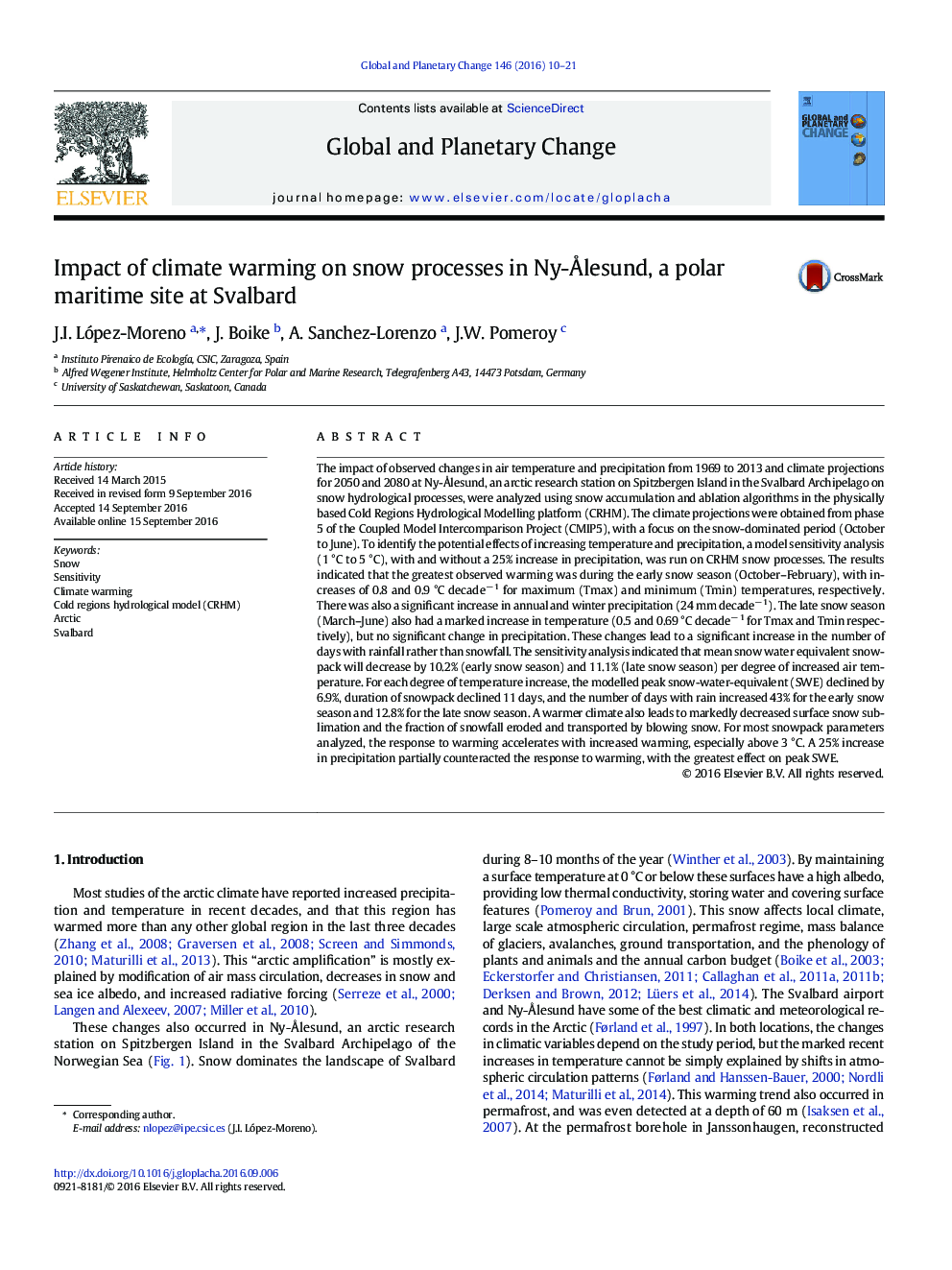| کد مقاله | کد نشریه | سال انتشار | مقاله انگلیسی | نسخه تمام متن |
|---|---|---|---|---|
| 6347866 | 1621636 | 2016 | 12 صفحه PDF | دانلود رایگان |

- A model sensitivity analysis was run to quantify climate changes on snow processes.
- Intense warming and a precipitation decrease have been detected in the region.
- Snow accumulation and duration will decrease by 10.5% and 11.1 days warmer °C.
- Increase in precipitation will not balance the effect of warmer temperature.
The impact of observed changes in air temperature and precipitation from 1969 to 2013 and climate projections for 2050 and 2080 at Ny-à lesund, an arctic research station on Spitzbergen Island in the Svalbard Archipelago on snow hydrological processes, were analyzed using snow accumulation and ablation algorithms in the physically based Cold Regions Hydrological Modelling platform (CRHM). The climate projections were obtained from phase 5 of the Coupled Model Intercomparison Project (CMIP5), with a focus on the snow-dominated period (October to June). To identify the potential effects of increasing temperature and precipitation, a model sensitivity analysis (1 °C to 5 °C), with and without a 25% increase in precipitation, was run on CRHM snow processes. The results indicated that the greatest observed warming was during the early snow season (October-February), with increases of 0.8 and 0.9 °C decadeâ 1 for maximum (Tmax) and minimum (Tmin) temperatures, respectively. There was also a significant increase in annual and winter precipitation (24 mm decadeâ 1). The late snow season (March-June) also had a marked increase in temperature (0.5 and 0.69 °C decadeâ 1 for Tmax and Tmin respectively), but no significant change in precipitation. These changes lead to a significant increase in the number of days with rainfall rather than snowfall. The sensitivity analysis indicated that mean snow water equivalent snowpack will decrease by 10.2% (early snow season) and 11.1% (late snow season) per degree of increased air temperature. For each degree of temperature increase, the modelled peak snow-water-equivalent (SWE) declined by 6.9%, duration of snowpack declined 11 days, and the number of days with rain increased 43% for the early snow season and 12.8% for the late snow season. A warmer climate also leads to markedly decreased surface snow sublimation and the fraction of snowfall eroded and transported by blowing snow. For most snowpack parameters analyzed, the response to warming accelerates with increased warming, especially above 3 °C. A 25% increase in precipitation partially counteracted the response to warming, with the greatest effect on peak SWE.
Journal: Global and Planetary Change - Volume 146, November 2016, Pages 10-21